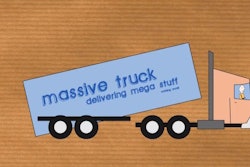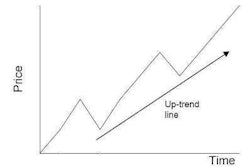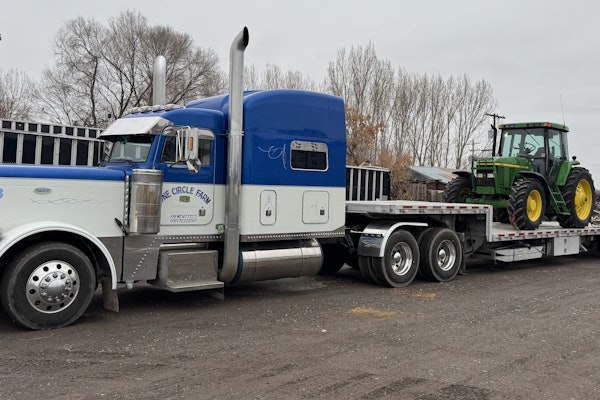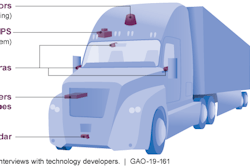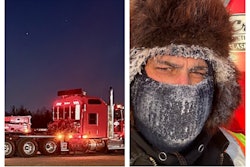Cost of new equipment figures largely in the difficulty of operating in today’s environment. Anecdotal reports from operators in my piece on the no. 5 named top owner-operator challenge in this month’s issue show a 30 percent rise in new-tractor pricing between 2006 and 2012 model years with all the new emissions-reducing equipment truck makers have been required to put on by the EPA.
The one silver lining in the most recent round of emissions standards is the potential for savings in fuel mileage. Company tank driver and former owner-operator Rick Gaskill, hauling for a small fleet leased to Quality Carriers, made note of his carrier’s relatively recent purchase of new Peterbilts to put on at a terminal in Texas on the occasion of a new contract. “We’re hoping fuel savings on the newer trucks will convince him to renew the fleet” in Kentucky, where Gaskill is based.
Find more thoughts from story sources on equipment costs below.
Allen Smith
We always bought used trucks with low mileage that were maintained well and passed mechanical inspection.
Have a mechanic you trust in your area. If at all possible, do not sign a lease agreement with a carrier unless you have an attorney look at it and explain the fine print. More drivers have lost their shirts doing this, even after they’ve been warned. Also, be leery of those who take out a percentage for a maintenance escrow account. If you leave, you may never see that money again. I personally had to take a company to court in order to get mine back and recently had a friend just go through the same thing. If you’re an owner-operator you should be able to determine what you need to put aside for maintenance.

It’s been a few years since I bought a truck, but the key to operating a business is you need: 1) Capital to start in order to cover expenditures. 2) To calculate maintenance, trailers, and all possible other add-on costs into your business formula. We used to set aside 15 percent after each move was complete. It’s vital to include this when calculating profits or you’ll find yourself in big trouble when things either break down or you want to expand. 3) Obviously, find the best prices and shop around.
Jerry Connolly of Truck Center auctions
After the 2008 meltdown, a lot of your lenders pulled their reins in and were not making loans – the used units became more desirable, and the prices started to increase and have steadily been increasing until abut the last 90 days [as of June]. … The market’s plateau’d off and [prices are] starting to drop a little bit. The new truck manufacturers are ramped up and are producing trucks at a strong pace.
The problem is, I think, people just don’t feel comfortable – the economic or political climate, they just don’t feel comfortable…. Information is currency, the more info freight companies, fleets have, it’s currency for them….
We do a lot with the small guys – they seem to be weathering a little bit better than some of the bigger guys. They have their debt ratio down…. We run statistics on it all the time. The end users at our auctions are roughly 60 percent of the buyers there, and 40 percent are the dealers. We are a public auction, so the end users are at our auctions all the time. The majority of them are smaller fleet buyers.
We’ve seen a dramatic upswing in the people using [the TruckerCenter.com auctions website], and they are end users. Though there are still some people who find a computer intimidating — often, I’m on the phone talking to them and they say, “my son’s doing it.”
We’re open five days a week 8 a.m.-5 p.m. each [physical auction site]. People can come out anytime and look at the truck and they’re welcome to bring their mechanic anytime.
Schneider National’s Mike Bethea
Equipment will make or break [an owner-operator]. The whole business centers around their truck. Not that I know everything or that I’m right, but an owner-operator today, because of all the things facing them – costs, increasing regulations, changing technology — they have to sit down and do due diligence about what they’re doing or what they want to do. There have been times in history where if you were to get out there and hustle, just about anybody who would work hard and not be unsafe could make money. Today, if you think abot the cost of everything [that’s not necessarily the case].
The first thing is to understand the truck is central to their business — the cost and the spec they’ve got to think about. Trucks are almost becoming specialized to the kind of work they do. Don’t over-spec for something that you don’t need.
Every contractor wants to be at home as much as possible — make sure that the revenue lines up with that cost. Put together a good business plan: figure out [how much you can work], the kind of equipment you can afford, and the expected cost of maintenance and the insurance…
Prime’s Don Lacy
Prime purchases and operates new equipment. This equipment is what owner-operators want. We maintain a three-four-year trade cycle, and volume purchasing allows us to obtain equipment below normal market values. We market our “used” equipment direct to the buying public as opposed to trading them back to the original equipment manufacturer.
Older equipment obviously has higher maintenance costs, and our trucks are sold when many of the warranties are still in place. We do a lot of testing and are not reluctant to try something new. For instance, Prime was a market leader in onboard safety technology. Prime recently developed and manufactured deer guards that were lightweight and sell for a third of the price of other manufacturers.
Small fleet owner Tom Blake
I’m reading about natural gas trucks…. Everything I’m reading looks good, but we need fueling infrastructure to be in place before we can really switch to it. If you still get the same mileage per gallon [equivalent], to me that will be the way to go. One of the things is — we have to be willing to change, but by the same token, some of the stuff they’re coming out with they’re putting a big price tag on it and it costs so much more.
Blake made an analogy between the passenger auto market, where 40-50 mpg was no uncommon for smaller cars, and at highway speeds even in some of the “more comfy sedans,” he said. The challenge for truck makers, he went would be to come up “with the technology” that boosts fuel mileage without charging so much for it that it’s cost-prohibitive.
You can access all of my reporting on the top challenges polling via this page.


